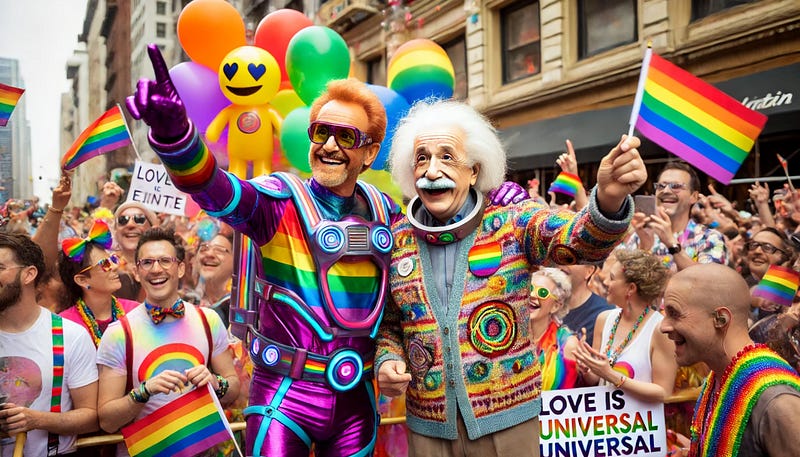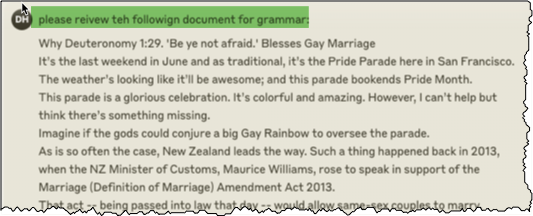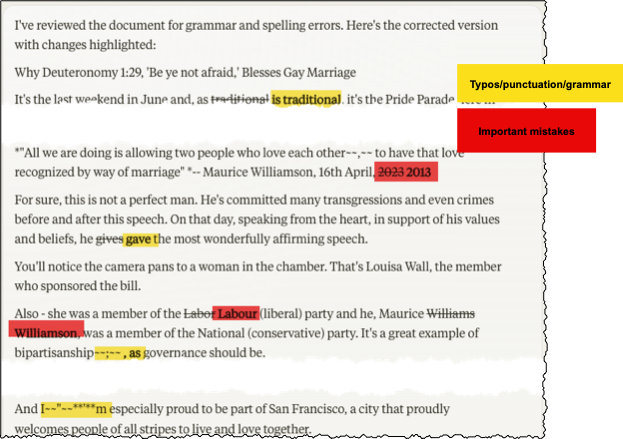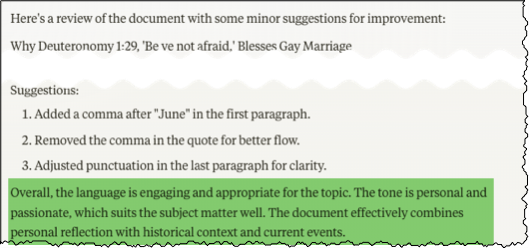Adventures in AI: Why Einstein was Wrong
Recently, I wrote this article celebrating Gay Pride and making a light-hearted reference to an event in New Zealand, back in 2013.
Recently, I wrote this article celebrating Gay Pride and making a light-hearted reference to an event in New Zealand, back in 2013.
It was important for me to get the language right. For this article, I chose to use claude.ai to help polish my writing. It’s important for me to write with clarity. Moreover, it’s imperative that I write in my authentic voice.
What’s AI got to do with this? Well, the news is full of LLMs and AI and hallucinations, and all the rest of it. I felt it would be instructive to show one entry point into this fascinating world, to help you understand the use cases and limitations of this new class of algorithms (which is a fancy way of saying “computer programs”).
Here’s my proof-reading and editing journey.
Step 1: Submit the document for review
It started with me logging into claude.ai
I asked it please reivew teh followign document for grammar: (yes, my typos included for verisimilitude)
Step 2: Results
Look how Claude has not just tidied up grammar, but also spotted some mistakes that would detract from the scholarship (such as it is) of the article. (I’ve excised as much of the extraneous stuff as possible.)
Step 3: Did I communicate what I intended?
Here’s a feature of AI that I find super-helpful: did my writing communicate what I intended it to? I asked Claude to summarize the document. The flow looks right, and I hit all the main points I had intended.
Note the “Retry”. Let’s give that a whirl…
No lesser than Albert Einstein is apocryphally quoted as “Insanity is doing the same thing over and over again and expecting different results.”
However, that’s literally what happens with this class of algorithm. See what happens when I hit the “Retry” button on my document.
It’s mostly a rephrasing of what was already generated by the AI. My yellow highlight shows how an important-to-me part of the document was picked out for the revised summary.
Step 4: Ask a different question
Watch what happens when I ask Claude a slightly different question of the updated document:
Please review the following document for language:
Ok. I think I’ve hit my mark — the content is on point and reflects my intention. Job done. But notice how Claude has:
Not just made the suggestions but changed the document (not shown here)
Given a useful précis of the goal & tone of my writing
Key Takeaways
Bear this in mind: AI is not magic — it just seems that way.
There’s a lovely quote from Arthur C. Clarke in his Three Laws: “Any sufficiently advanced technology is indistinguishable from magic”.
AI tools are great for certain classes of problems, and document polishing is just one tiny example.
Here are some key takeaways:
AI Tools are just algorithms. They’re well suited to a certain class of problem. It’s imperative that you understand “what you’re buying” when using AI
Different AI Engines perform differently well depending on the subject matter, source data or type of investigation. I’m building a tool which I’m calling The Minority Report to showcase this.
How you ask the question will influence the answers you get.
The same AI engine may give you different answers to the same question each time you ask.







